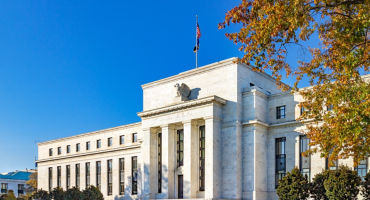- Fixed Income Portfolio Manager
Skip to main content
- Funds
- Insights
- Capabilities
- About Us
- My Account
The views expressed are those of the authors at the time of writing. Other teams may hold different views and make different investment decisions. The value of your investment may become worth more or less than at the time of original investment. While any third-party data used is considered reliable, its accuracy is not guaranteed. For professional, institutional, or accredited investors only.
After the inflation shock of 2021 – 2022 triggered a rapid rise in interest rates across most developed markets, cash and bond investors enjoyed a welcome boost in income thanks to the return of attractive yields.
Amid the recent resumption of market volatility, bonds continue to provide capital appreciation along with still high income. However, the path ahead may require skilful navigation, given stubborn inflation, growing differences in economic growth trajectories across countries and divergence in policymakers’ responses. Shifting geopolitics — exacerbated by the actions of US President Donald Trump since his return to the White House — present another factor of unpredictability, as illustrated by the latest bout of market turmoil. How should investors think about repositioning their portfolios for this prevailing uncertainty?
Today’s uncertain outlook reflects a structural regime change that we believe investors need to be attuned to. The key features of this new economic era include:
Central banks are no longer acting as a source of stability, as they are caught between the need to contain inflation and the desire to avoid engineering the economic slowdown that may be needed to bring inflation durably back in line with their targets. This dilemma could be exacerbated by the impact of US tariffs as governments may have no other choice than to loosen the purse strings. Monetary policy decisions may well catch investors by surprise, with central banks taking potentially very different paths. For instance, given the major ramifications of US tariffs on the European economy, the European Central Bank (ECB) may end up cutting rates meaningfully below current market consensus. On the other hand, wage and inflation data in the UK may hamper the Bank of England’s efforts to continue its rate-cutting cycle. While a risk, this divergence also constitutes an opportunity for investors to capitalise on.
While short-term cash deposit accounts have done well over the past few years, we think they now come with a significant reinvestment risk, given declining rates. Unlike bonds, cash instruments do not benefit from the uptick in bond valuations that typically accompanies rate cuts, and income resets at lower levels, suggesting diversification into fixed income may be overdue. Many investors have already switched part of their cash holdings to domestic government bonds — with several governments now actively targeting retail investors — or other “safe-haven” instruments. However, in our view, further steps could now be warranted. While there is an important role for domestic government bonds in portfolios, complementing single-country exposure with a diversified high-quality global bond portfolio could:
Targeted diversification does not necessarily mean having to take on significant duration or credit risk. In fact, we think that in an uncertain environment, flexibility can be a bond investor’s best friend. Specifically, we think high-quality, unconstrained approaches offer an attractive avenue to complement existing portfolios as they have limited average duration and credit exposure while offering diversification across the full gamut of countries, sectors and themes.
And we think the signs are encouraging for flexible fixed-income strategies to continue their positive trajectory in today’s diverging world, offering both significant scope for downside protection and opportunities for upside potential amid market dislocations. These sudden readjustments are likely to be a constant feature of this new economic era.
For instance, at this stage, the US administration’s policy programme is likely to lead to structurally higher inflation, heightened volatility and a potential reversal in global capital flows, as well as a slide in the US dollar. Elsewhere, Japan and the UK appear to be pursuing monetary policies that are still in dissonance with the economic data, while the euro area remains hobbled by political constraints in France, concerns about debt sustainability — only partially offset by Germany’s fiscal measures — and the continued impact of the war in Ukraine. Across the board, US tariffs and the risk of a surge in Chinese imports to non-US markets are now key areas of concern for policymakers and investors.
On the opportunity side, countries like Australia, New Zealand and Canada boast low levels of public debt but high private debt, meaning their central banks may be better equipped to deal with any financial instability and more sensitive to a deterioration in the cycle. They could deliver higher and more stable total returns given high starting points in yields as well as acting as alternative “safe havens”.
We believe investments in fixed income should seek to achieve three key objectives:
In today’s more unpredictable environment, we think these objectives can be best achieved by adopting a more flexible approach that targets a global opportunity set within robust risk constraints. In our view, having greater flexibility on duration, country and sector selection can help protect both income and capital during periods of heightened volatility. As such, we think this can be a powerful addition to most portfolios, helping to smooth the impact of volatility on single country or region allocations by diversifying exposures across diverging economic and policy cycles.
In practice, there are a wide range of unconstrained strategies available in the market and investors will need to ensure that the chosen approach meets their specific requirements. Given the uncertain environment, one avenue investors may wish to pursue is allocating to flexible fixed-income strategies that place a higher emphasis on capital preservation and liquidity through higher allocations to select high-quality government bonds — but still provide the potential for positive long-term returns through exposure to a rich, global opportunity set.
Experts


Financing the AI boom: credit markets at a crossroads
Continue readingFinding durable value amid shifting currents
Continue readingURL References
Related Insights
Stay up to date with the latest market insights and our point of view.

Weekly Market Update
What do you need to know about the markets this week? Tune in to Paul Skinner's weekly market update for the lowdown on where the markets are and what investors should keep their eye on this week.

FOMC: Easing into uncertainty
Fixed Income Portfolio Manager Jeremy Forster profiles the Fed's December rate cut, labor market trends, inflation pressures, and the role of anticipated changes to FOMC leaders in 2026.

Opportunity ahead: Optimism or illusion?
Explore our latest views on risks and opportunities across global capital markets.

Financing the AI boom: credit markets at a crossroads
Fixed Income Portfolio Manager Derek Hynes and Fixed Income Investment Specialist Will Prentis examine how the AI financing boom is transforming credit markets and discuss the opportunities and risks it creates for investors.

Low tide, sharp eyes: What to pick up
Fixed Income Managers Campe Goodman and Rob Burn share their outlook for credit in 2026 and discuss how investors can reposition for an environment where opportunities are harder to find.

Finding durable value amid shifting currents
Fixed Income Strategist Amar Reganti and Investment Director Marco Giordano explore how to approach bond investing in 2026. They see durable value for investors who can flexibly adjust to the shifting currents ahead.

Monthly Market Review — October 2025
A monthly update on equity, fixed income, currency, and commodity markets.

Investing in 2026: prepare for inflationary growth
Macro Strategists John Butler and Eoin O'Callaghan share their annual macro outlook and discuss likely implications for markets and investors. They outline four potential scenarios graded by level of probability.

Rapid Fire Questions with Ross Dilkes
In this edition of “Rapid Fire Questions,” fixed income portfolio manager Ross Dilkes shares his views on the Asia credit market—covering the macro outlook, China’s momentum, the most compelling opportunities across the region, and key risks shaping the next 12 months.

Constructive, selective, resilient
Amar Reganti, a member of our Insurance team, explains why he believes insurers should remain selectively risk-on while prioritizing high-quality income and preserving flexibility to add risk as valuations improve.

Questioning US credit quality
Fixed income strategist Amar Reganti examines questions surrounding US creditworthiness.
URL References
Related Insights
Monthly Market Review — October 2025
Continue readingBy